How to Install a Green Roof
Until relatively recently green roofs were rare, the stuff of fairy tales and Tolkien novels. But with climate change a growing concern, more people are turning to living roofs as a sustainable — and stylish — way to help insulate their homes, reduce runoff pollution, save on energy costs and extend the life of their roofs up to twice as long.
David Coulson has expert insight on living roofs, as he not only incorporates them into his design work, but works beneath one in his Vancouver studio.
“The big bonus is the natural protection it provides in terms of solar degradation to my roof and mechanical protection it provides,” says Coulson, “as my studio is nestled in a thick stand of 125-foot tall Douglas fir trees that drop lots more than needles in a good windstorm.”
Here are his insights on installing living roofs, from both a designer’s and a homeowner’s point of view.
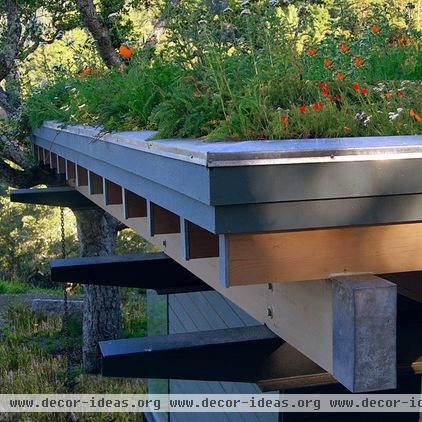
Who to hire: You’ll likely need to start with a structural engineer to be sure your roof can handle the extra weight, which can be up to 40 pounds per square foot after it rains.
You’ll also want to hire a reputable general contractor to prep your roof with a waterproof membrane and any insulation required by your municipality. You should also have your contractor add decorative edging to make sure your plants don’t slide off the roof.
But as for the actual garden installation, Coulson believes it can be a relatively easy DIY project.
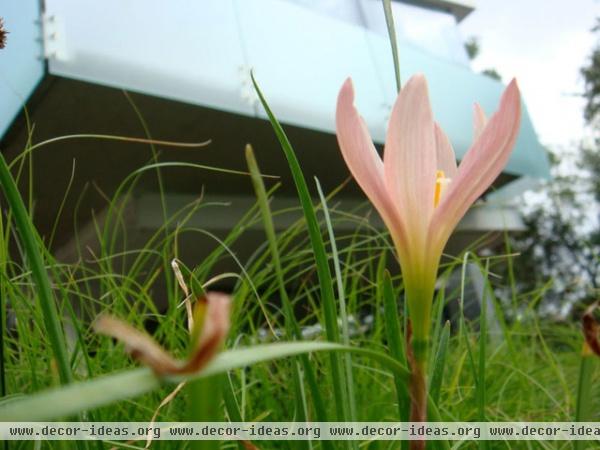
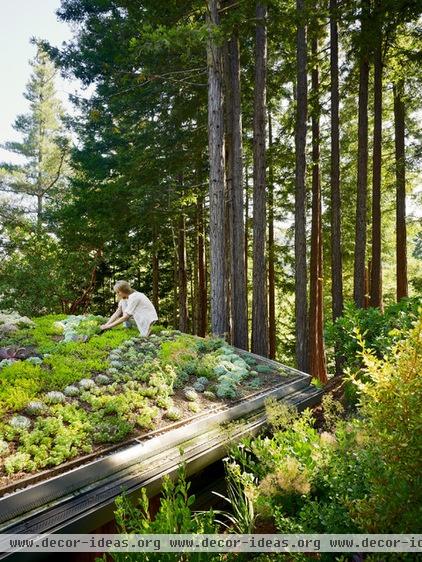
Cost range: Varies widely depending on where you live. You’re likely to spend $13 to $45 per square foot installed.
Typical project length: A few days up to a week, depending on size.
Best time to do this project: During planting season.
Permit needed: Check with your municipality, as permit requirements can vary depending on what type of membrane you’re installing and whether you’re making changes to the existing structure.
Project considerations: Besides the structural factors, you’ll also need to determine whether your roof itself has the right slope to be a living roof. If it’s flat or up to 30 degrees sloped, it might be a good candidate. You’ll also want to think about whether it gets enough sun for you to grow low-maintenance plants.
See benefits of living roofs
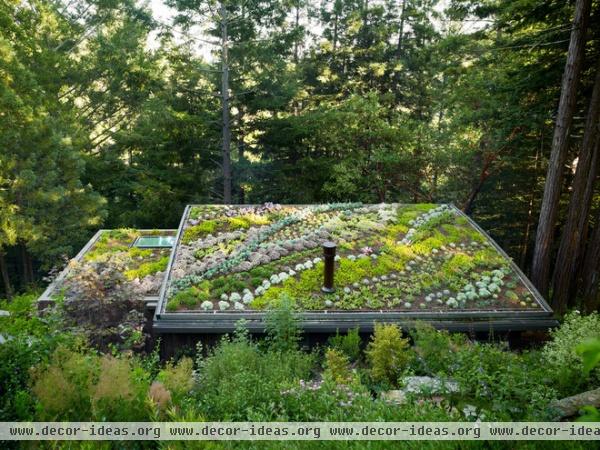
First steps: Once your contractor has installed and water tested the membrane, your roof is ready to be planted. There are two ways to do this:
Use a modular system of planted living roof trays.Add soil and plant your roof as though it were a garden in the ground, as shown here.
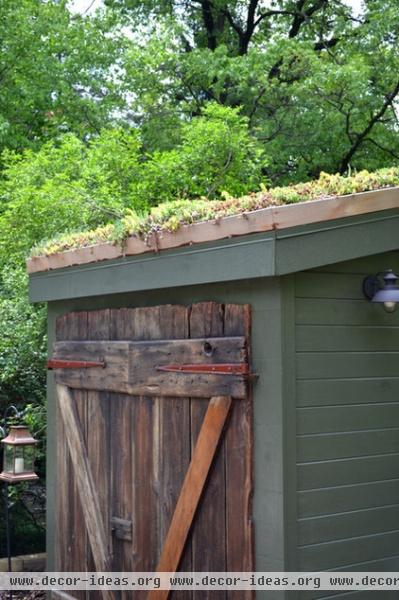
The advantage of modular roof trays like the ones used on this shed roof is that they come preplanted, so you don’t have to worry about whether your plantings will take. They can also offer easier access to the waterproofing below and increased water retention.
The downside is that you won’t have as much leeway in terms of creativity.
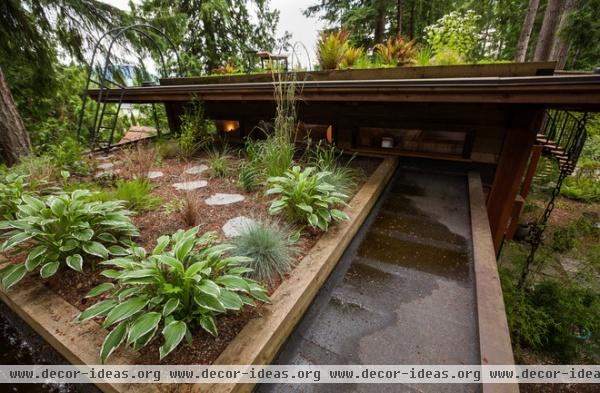
Coulson opted for the soil and planting approach, as shown in this photo. He began by installing a two-ply roofing membrane that was torched down instead of nailed. Then came a dimpled drainage layer and an industrial filter cloth. Next came a 6-inch layer of a pumice, sand and humus soil mix.
Tip: Be sure to include a draining layer — as Coulson did with his dimpled drainage — above your membrane and below your topsoil.
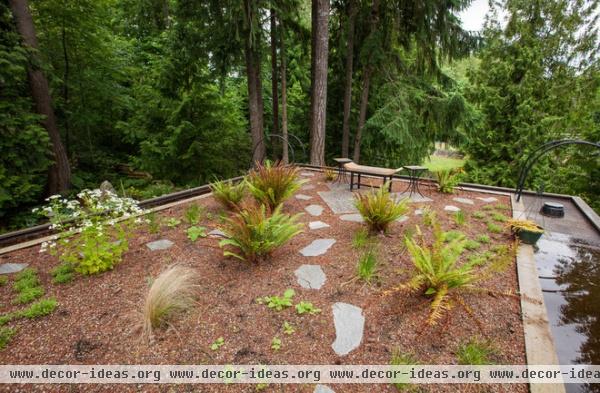
His roof garden has three tiers. “The first [has] salvaged plants from clients’ gardens during construction projects,” he says. “The second upper roof contains a sitting terrace of recycled pavers, creating a spot to relax and smell the coffee, and a collection of local indigenous ferns, succulents and some edible chives just in case I need a snack. And the third level [has a] slightly brighter aspect [with] Swiss chard and other leafy greens.”
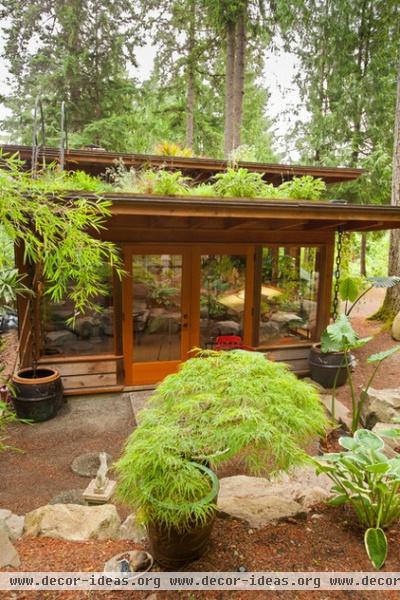
The moist Vancouver climate has made it easy for Coulson to plant as he pleases. “Here on the West Coast, or ‘wet coast,’ as it is sometimes referred [to], plants like hostas even survive nicely on my roof with little or no maintenance,” he says.
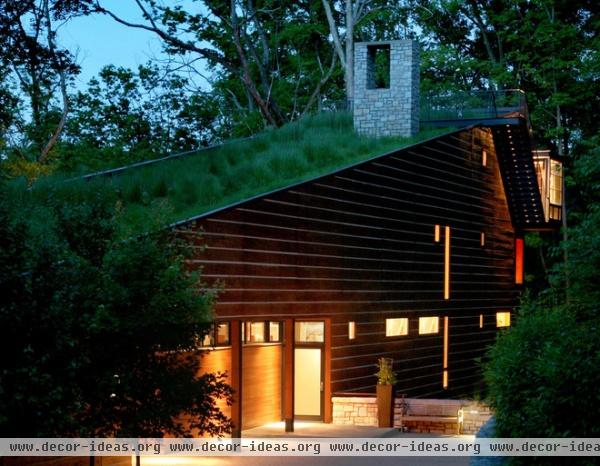
In climates that aren’t as forgiving, drought-tolerant grasses (like the ones on this roof), sedums or succulents can all be good options, depending on climate and sun exposure.
Tip: Once your living roof is installed — whether you’ve opted for modules or a garden — water it right away to settle the soil.
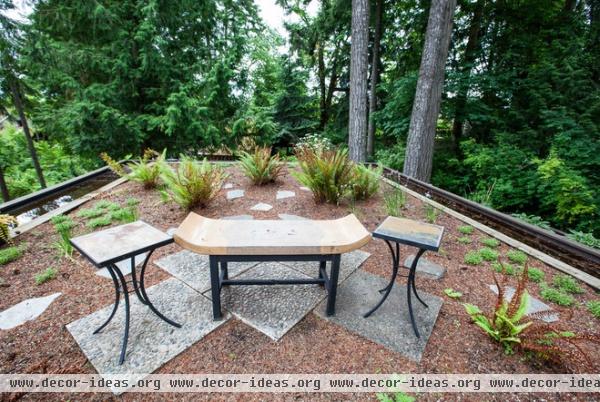
Maintenance: Unless you’re experiencing a severe drought, your roof will likely require very little maintenance. Many need to be watered only a few times a year, and some don’t need any water at all.
“We weed once a year, which takes about two hours for 900 square feet,” Couson says. “I water maybe twice a year, which is very minimal considering we average six weeks of drought during the high season of July and August. The pumice-based medium holds water like a cactus!”
More: 6 Green-Roof Myths, Busted












